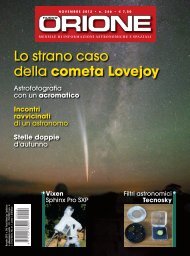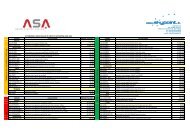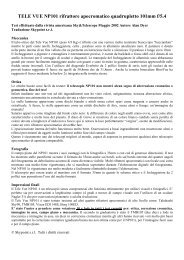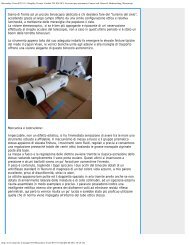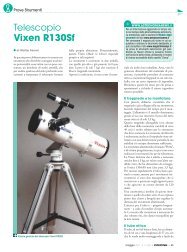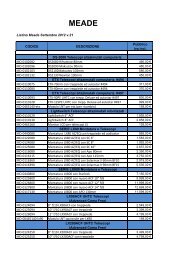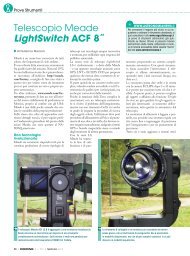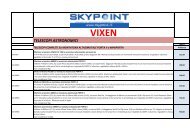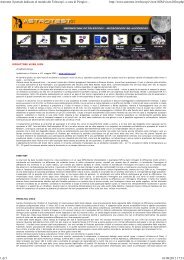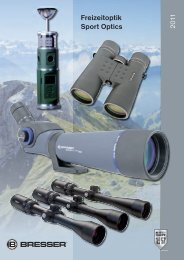CONFRONTO CON IL FILTRO H-ALFA BAADER - Skypoint Srl
CONFRONTO CON IL FILTRO H-ALFA BAADER - Skypoint Srl
CONFRONTO CON IL FILTRO H-ALFA BAADER - Skypoint Srl
You also want an ePaper? Increase the reach of your titles
YUMPU automatically turns print PDFs into web optimized ePapers that Google loves.
SKYPOINT s.r.l.<br />
VIA ZORUTTI (S.S.13) 145/11 CAMPOFORMIDO – UDINE –<br />
TEL 0432 652609 FAX 0432 663473 www.skypoint.it e-mail: info@skypoint.it<br />
The comparion of out-of-band blocking between the Astrodon 6 nm and Baader 7 nm H-a filters is show<br />
below:<br />
The NIR (>700 nm) difference is large. Both filters have excellent out-of-band blocking at shorter<br />
wavelengths of OD 6. However, the Baader filter has significantly poorer out-of-band blocking at NIR<br />
wavelengths where many CCD detectors still have considerable sensitivity, such as the KAF3200ME,<br />
KAF6303, back-thinned detectors and the new large KAF16803 andKAF09000. This difference is nearly 3<br />
orders of magnitude and certainly explains part of the cost difference.<br />
This would not be acceptable for professional filters, and Astrodon (and Custom Scientific) filters are made to<br />
professional standards. How does this affect the type of astrophotography mostly done by amatuer<br />
imagers? It will likely not make much of a difference for bright objects, such as M16, M20, the Veil<br />
Supernova remnant, etc. As with narrower filters, it will manifest itself in the fainter areas and fine detail, e.g.<br />
contrast.<br />
To test NIR leakage, I used an Apogee Alta U16M CCD with a Kodak KAF16803 large format CCD<br />
operated at -20C in my dimly lit office with a standard flashlight directed at the ceiling. A flashlight was used<br />
over just a few minutes of time, so changes in lamp intensity should not be a factor. Further, the overhead<br />
room lights are the coiled fluorescent bulbs, and a continuum from an incandescent bulb with NIR intensity<br />
was most appropriate. A calibrated light source is unnecessary to demonstrate the difference in S/N and light<br />
leakage in these tests. The camera was pointed up. A 2" nose piece was secured into the camera holding<br />
a standard 48 mm Astrodon Schuler photometric (Bessell, Johnson-Cousins) IR filter made with 3 mm thick<br />
piece of Schott RG9 glass and 1 mm of KG4 glass. This filter is used to compare the IR leakage of the two<br />
H-a filters, because it blocks the filter's bandpass and all shorter wavelengths. It's scan (Is) is shown below:






